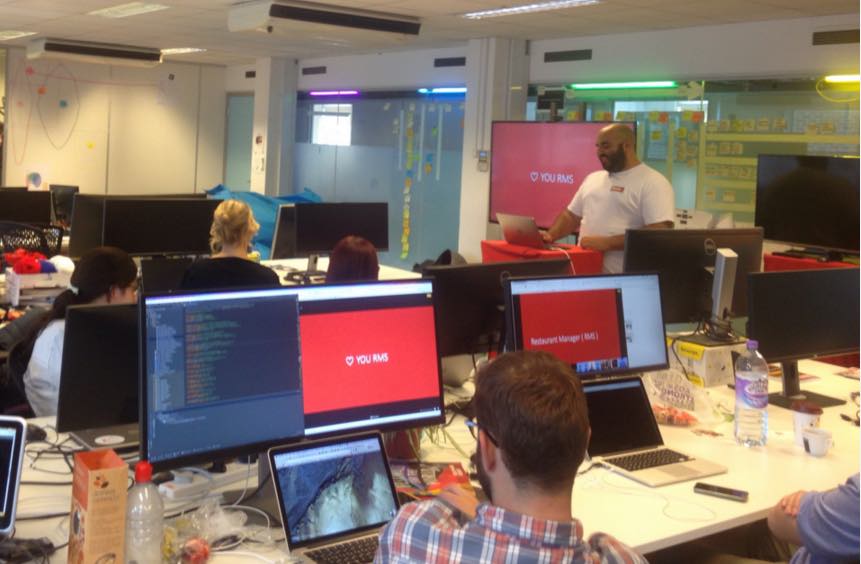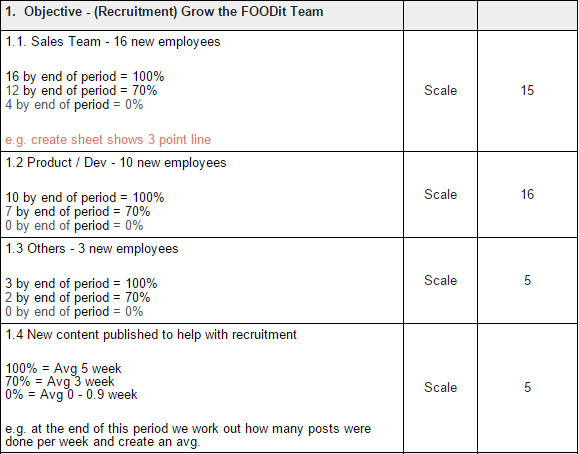
As a young, but quickly-growing startup, we embrace change and always try to improve on how we run our business by trying out new things. One of our means of doing it are our OKRs. OKRs, meaning Objectives and Key Results, are a method of tracking and defining shared objectives and their outcomes. Objectives are what the individual or company want to accomplish and are usually qualitative. They are currently implemented by a number of massive companies such as Google, LinkedIn or Twitter – to name just a few.
The reason we decided to write this article is not because we consider ourselves seasoned experts on the topic - we are merely novices in the OKR world. However, we are passionate novices who want to share their journey of exploring the unknown and proactively learn about it as we move forward.
Here are the 5 things we have learned so far:
1. You need to have a clear understanding of how they will work from start to finish (before you start)
The final outcomes need to be very thoroughly outlined, concrete and measurable. There has to be a clear understanding of how the end goals are achievable and what qualifies for an accomplished objective.
As we approached the end of the first year of our OKRs, we realised that it was a lot harder to estimate them than we had thought it would be and that we had set ourselves up for conflict. We were disagreeing on a number of issues, struggling to measure the outcomes and align the objectives of different departments. Why?
The reason was that we did not properly pre-organise how to collect the data to begin with. We used FreshDesk support software to gather the figures, yet it was not very effective as we did not spend any development time to setup automated ways to easily obtain the right data. Because the numbers were really difficult to obtain from the system, we lacked focus, speed and clear direction.
To make up for it in this OKR period, we started improving reporting by using Google BigQuery and Microsoft Azure SQL with Power BI to allow easier and more open access to data from Excel and Power BI. This platform can be used to track non-sales data such as HR and Support Cases figures.
What we learned for sure is that data needs to be easy to obtain and transparent. Also, you should always try to limit the number of data-gathering means you are using: the more you have, the harder it will be to make sense of it and understand where you are.
2. You need to align the OKRs of different departments to make them work
Toyota is a famous example of how the lack of understanding within a company can lead to considerable damage. As a corporation, Toyota are famed for their just-in-time manufacturing and design as well as “lean work” system. However, a number of recalls occurred in the company between 2009 and 2011, when faulty designs resulted in user injuries, lawsuits and a heap of expenditure in compensation – all due to lack of communication in a fatal clash of targets between different departments.
Although the outcomes of our predicament were not, perhaps, as detrimental as Toyota’s, we certainly learned a valuable lesson about communication from our first year of OKRs. There is no room for subjectivity when outlining them and everyone’s opinions should be in mutual agreement. This is something we did not consider right in the beginning; all the teams were very internally focused and product direction was not clear which made the OKRs unclear as well.
The way we redeemed this is we came up with a concrete, organised layout of how each department’s OKRs aligned with each other, starting with our main company goal: getting more customers. From that, we figured out the rest of the flow:
- Sales: In order to get more sales, we needed more salespeople whose main OKRs revolved around hitting the set target of sign-ups by the end of the OKR period which, in our case, was 300.
- Support: To keep the customers happy, we have an efficient support team on board. Their OKRs are to lower the response time to consumer queries - we found it to be a significant factor that makes them more likely to order again.
One of Support Team’s key objectives - Product: In order to increase our sales we would need new product features which called for more product managers who would work on restaurant websites and our food-finding platform. Their OKRs also include collecting a certain amount of photos and reviews from users, improving retention rates and reducing negative feedback.
One of Product Team’s key Objectives - Development: For the new products to work efficiently, we need good developers who will reduce the loading time for the pages, make system updates and get everything moving faster.
- Ops: As our business grows, the team grows along with it. The People Ops are responsible for sourcing and hiring the product managers and developers who then work on the said products.They also maintain the company culture and work on giving the prospective FOODies an insight into the FOODit life by writing articles and looking after social media.
One of People Ops Team’s key Objectives: growing the team
In order to enhance this system in practice, we also have a monthly all-hands meeting in which we discuss each department’s OKRs so that everyone would be aware of what is happening in the company and stay updated. Everyone’s OKRs are also available on a shared, public document, hence, they are accessible at any given point, by anyone.

The monthly FOODit All-Hands meeting
3. Make them easy to reach but a stretch to achieve
One of the most important things about OKRs is making them a part of your daily routine. Looking at them every day and getting inspired to achieve our goals is something that pushes us to continuously improve on them. OKRs are supposed to be a driving force that is constantly evolving along with the company, hence it should be regularly updated; otherwise – it goes stale and completely misses the point.
However, people tend to be scared to lock down a number and commit to it when the product they are building is still unknown and there is no baseline. This is exactly what happened to us in the first year: we were vague about the final numbers which made the process leading up to the end results a game of guessing.
When deciding on a final figure, you need to maintain a healthy balance of achievability. While goals should be tangible and realistic, achieving them fully needs to be a challenge, hence you need to set the bar really high. You should never be able to achieve 100% - it is great if you attain even 70% of your objective. Once you set your goals high, you will push yourself beyond your limits which will put forth all the right questions and make you look at tasks from a completely new angle. If you only focus on things that are well within your reach, you will just keep doing the same thing over and over again. Getting out of your comfort zone will make you think harder and more creatively about the steps you take to achieve your objective.
4. Never just show off an acronym
It is easy to throw around a cool term at job fairs and product chats, but at the end of the day the things that count are commitment and hard work. No decision motivated purely by “using something Google does” ever led to anything good. Taking pride in using OKRs is using them at work day to day and getting inspired by them to do great work.
OKRs need to be something that the whole team can embrace and engage in. Therefore, they should always be public so that employees would know what their colleagues are working on and so that they would be able to see how their own work fits into the bigger picture. In our case, we have reports and dashboards constantly on display around the office. Our employees do not have to lift a finger to see the data at any given point: we have TVs showing all the necessary statistics for you to see how the company is doing.
This way, people are more encouraged to offer or ask for help, collaborate and share ideas as a team. Work becomes more inspiring and inviting to think abstractly. Life is not made easier by adding an acronym into your internal marketing, it is made easier by hard work and openness.
5. Don’t obey other companies’ OKRs
In relation to the previous point about not just showing off an acronym, OKRs should be uniquely your own. It is impossible to get employees inspired about something copied from another company. The thing that makes the great businesses we take our inspiration from unique is the fact that their objectives and key results are customised to serve their own goals and needs entirely.
OKRs are there to achieve shared goals which, in turn, help us arrive at our mission statement. The mission statement should be that one single goal that sets your startup apart from everything and everyone else. In order to achieve it, you must achieve your high level - the company OKR, which makes it really important that you do not replicate the objectives of other companies. You know your company better than anyone else and you and your team know what is best for it.
All in all, creating effective OKRs is a long, tortuous process that needs attention, care and continuous involvement of the whole team. As mentioned before, we are still working on our own and there are many things we have learned from the past year which we are doing better this year. Our teams are much more aligned now and the objectives of separate departments are enlaced with the overall company goals, while they are achieving separate things independently. It gives people more freedom to act and make decisions in FOODit’s best interest as well as makes them more interested and personally engaged in the company’s goals.


